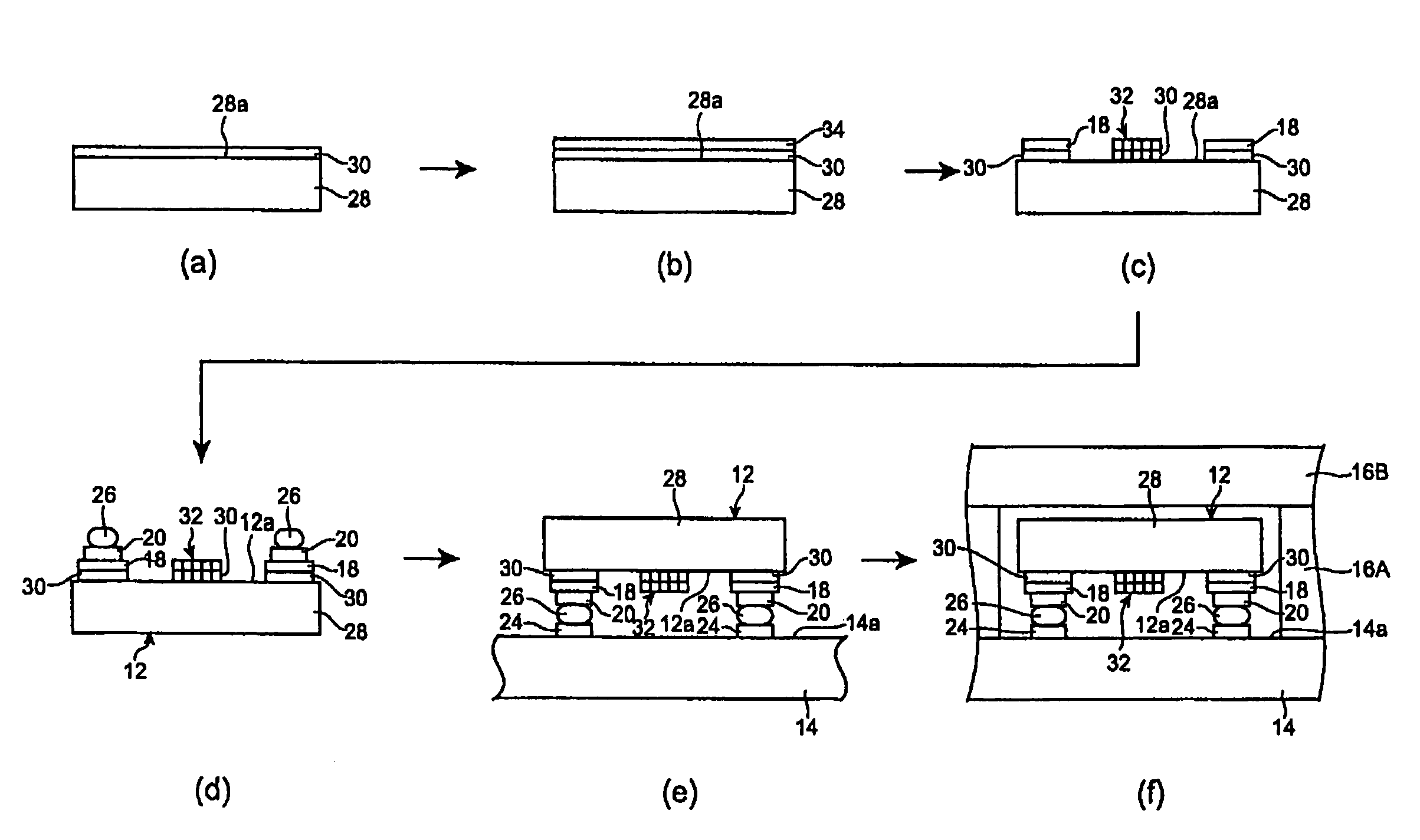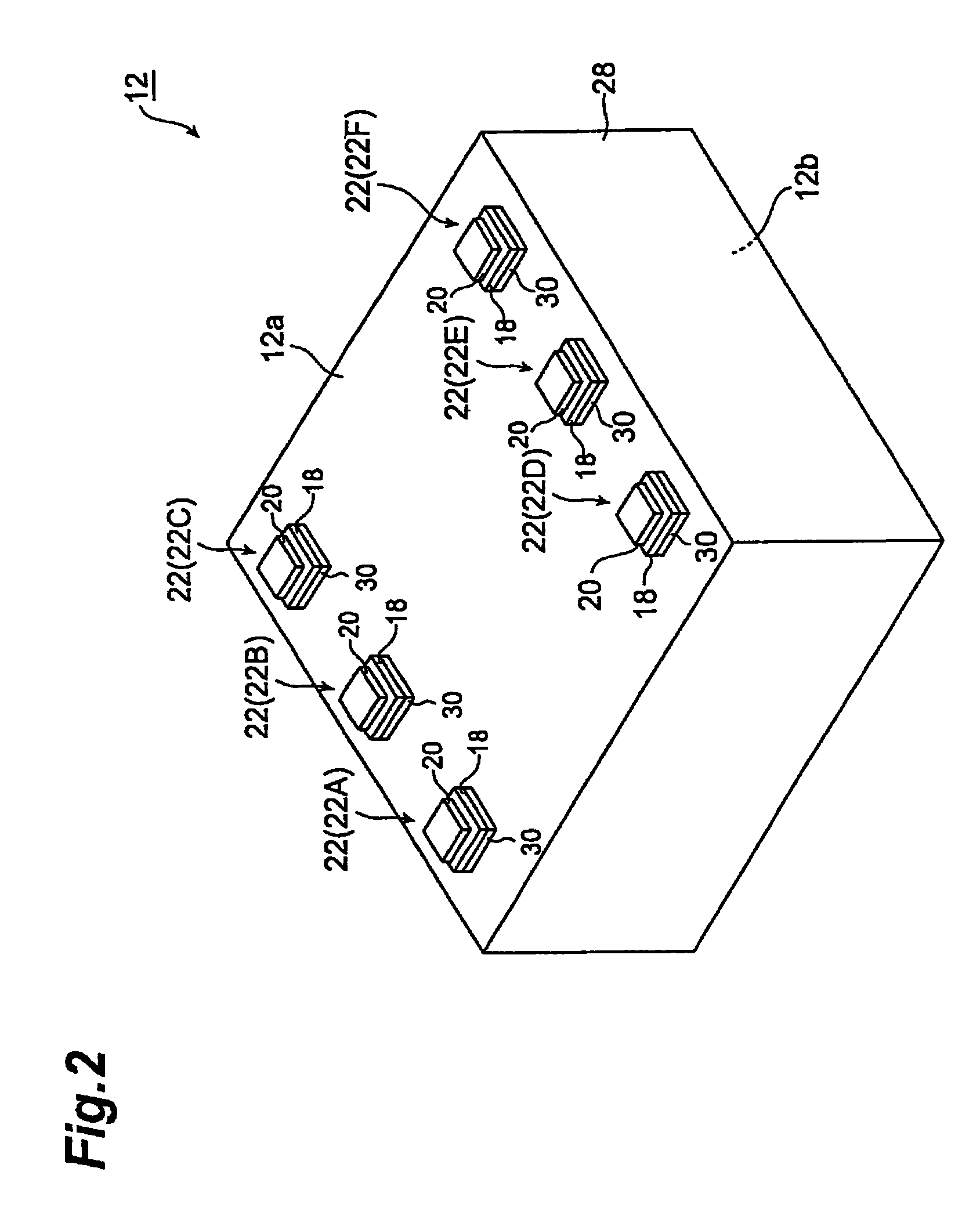Surface acoustic wave element, surface acoustic wave device, duplexer, and method of making surface acoustic wave element
a surface acoustic wave and element technology, applied in the field of surface acoustic wave elements, surface acoustic wave devices, duplexers, etc., can solve the problems of difficult to control the thickness of the undercoat layer, difficult to control the doping depth of the substrate surface likewise, and the character of deterioration, etc., to achieve uniform electric charge distribution, low volume resistivity, and volume resistivity of the piezoelectric substrate
- Summary
- Abstract
- Description
- Claims
- Application Information
AI Technical Summary
Benefits of technology
Problems solved by technology
Method used
Image
Examples
Embodiment Construction
[0032]In the following, modes which are considered the best for embodying the surface acoustic wave element, surface acoustic wave device, duplexer, and method of making the surface acoustic wave element will be explained in detail with reference to the accompanying drawings. Constituents identical or equivalent to each other will be referred to with numerals identical to each other without repeating their overlapping descriptions if any.
[0033]FIG. 1 is a schematic sectional view of the surface acoustic wave device in accordance with an embodiment of the present invention. As shown in FIG. 1, the surface acoustic wave device (hereinafter referred to as “SAW device”) 10 in accordance with the present invention comprises a surface acoustic wave element (hereinafter referred to as “SAW element”) 12, a mount board 14 for mounting the SAW element 12, and a cover 16 for sealing the SAW element 12. Formed on the lower surface 12a of the SAW element 12 are three pairs of pad electrodes 22 i...
PUM
 Login to View More
Login to View More Abstract
Description
Claims
Application Information
 Login to View More
Login to View More - R&D
- Intellectual Property
- Life Sciences
- Materials
- Tech Scout
- Unparalleled Data Quality
- Higher Quality Content
- 60% Fewer Hallucinations
Browse by: Latest US Patents, China's latest patents, Technical Efficacy Thesaurus, Application Domain, Technology Topic, Popular Technical Reports.
© 2025 PatSnap. All rights reserved.Legal|Privacy policy|Modern Slavery Act Transparency Statement|Sitemap|About US| Contact US: help@patsnap.com



